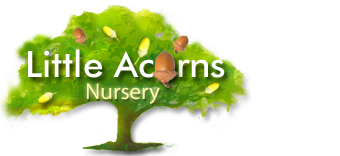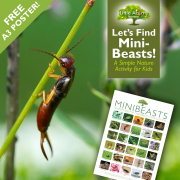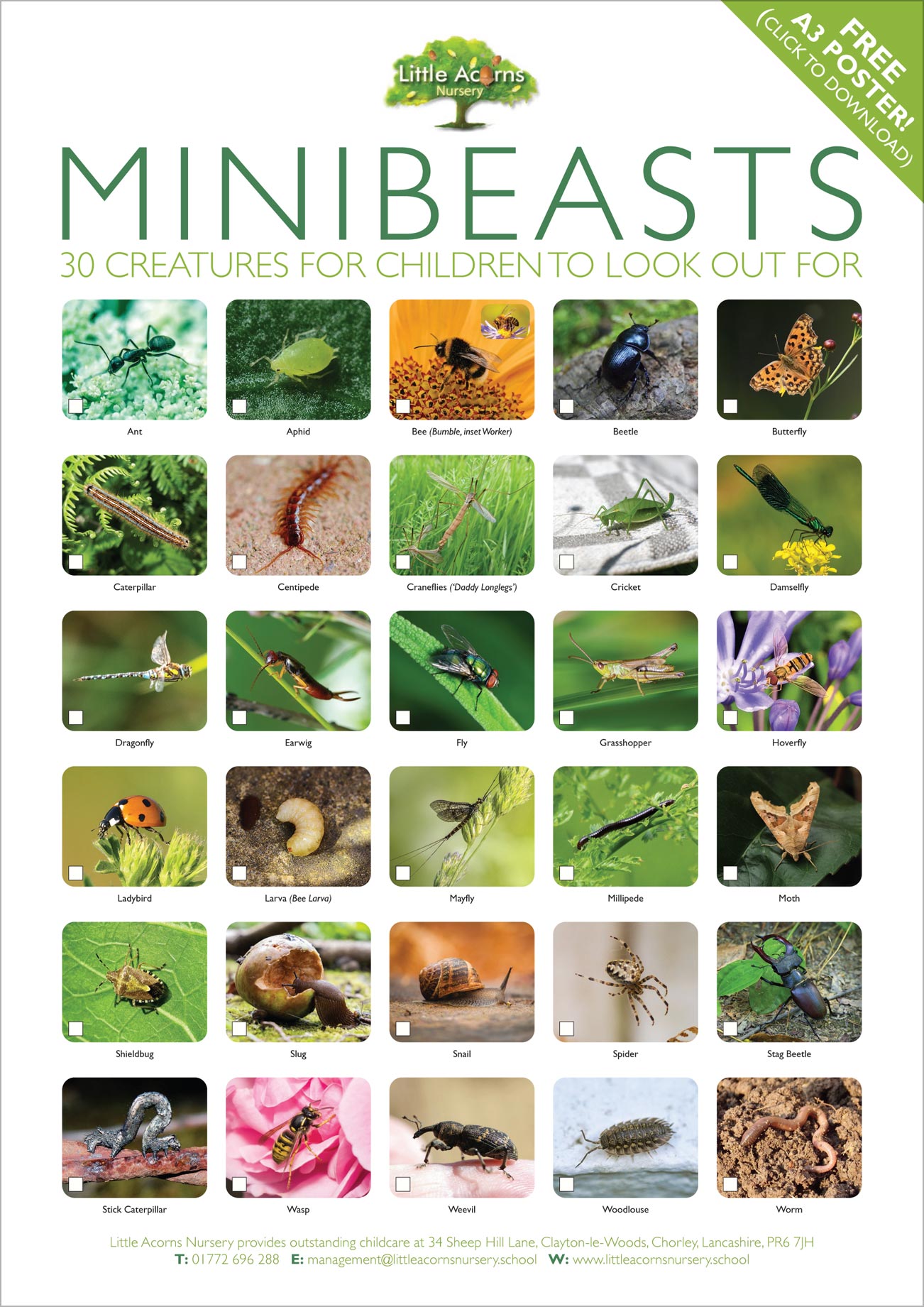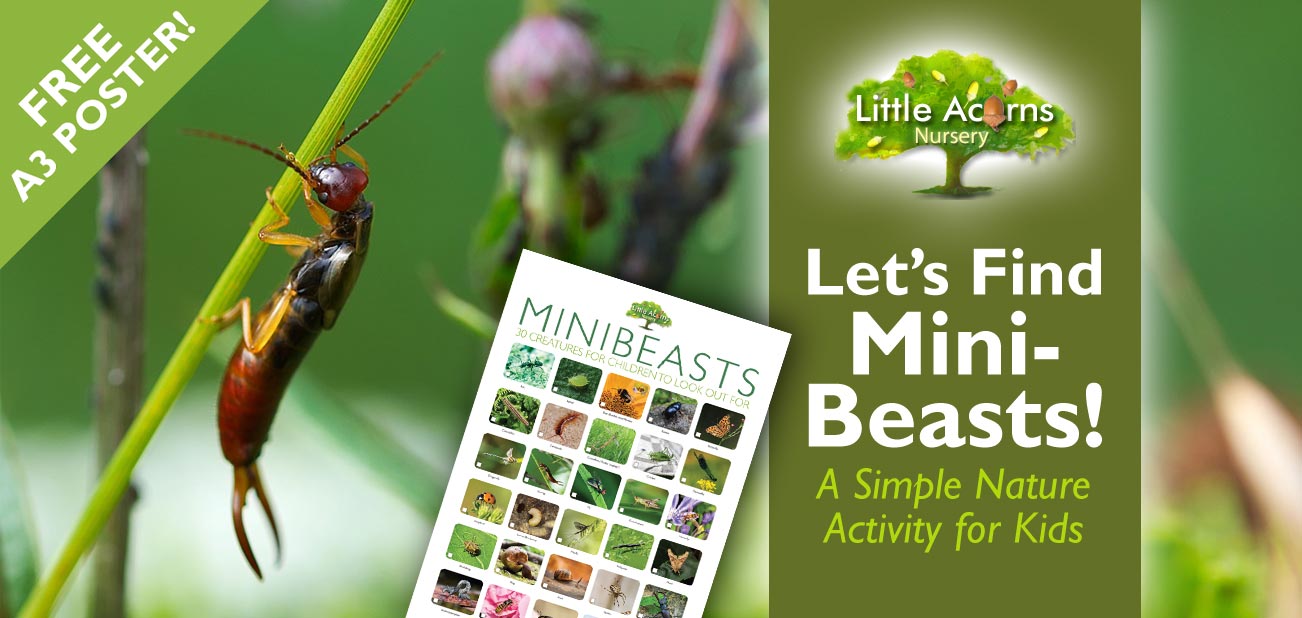
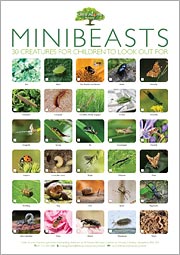 Children and parents, let’s go minibeast spotting! Whether you have a garden, neighbourhood park, or just a few potted plants, there are bound to be minibeasts visiting or living there. What’s more, summer is the perfect time to spot them. Spending time in nature is hugely important for children and there are many benefits to children simply playing outdoors too. Today’s minibeast activity is therefore the perfect opportunity for young children to reap all those benefits, get closer to nature, and learn about some of its incredible wildlife.
Children and parents, let’s go minibeast spotting! Whether you have a garden, neighbourhood park, or just a few potted plants, there are bound to be minibeasts visiting or living there. What’s more, summer is the perfect time to spot them. Spending time in nature is hugely important for children and there are many benefits to children simply playing outdoors too. Today’s minibeast activity is therefore the perfect opportunity for young children to reap all those benefits, get closer to nature, and learn about some of its incredible wildlife.
Minibeasts
Minibeasts are fascinating little creatures that come in many shapes and sizes. Each is a unique little character and many are simply enchanting. Take bumble bees, for example, with their adorable furry bodies, stripes and antennae, little ladybirds with their cute spots, or stick caterpillars that look just like twigs! There are so many different types, so we’ve put together a free identification poster showing 30 of our favourite minibeasts that are likely to be lurking nearby if families take the time to look. The poster is free to download and share. Print it out in colour at full size (A3) or reduce it to A4 for children to take outdoors. There are little tick boxes too, so children can mark which minibeasts they’ve seen as time goes by.
Our minibeast poster is a nice companion to our previous article that showcased a British Birds poster and a bird-spotting activity, which was published here back in May (follow the bold green link). We’ll also be adding more nature-themed posters in this series over the coming months, so keep an eye out for those, to add to your child’s collection.
Poster Preview:
Poster Download Instructions
Click the large preview image above (or this link) to view or download the poster in Acrobat PDF format. Whether you left-click or right-click will depend on your own specific browser settings, so try both if in doubt. You will need to have Acrobat Reader ∞ to view the file. Print in colour from Acrobat Reader ideally using high-quality A3 paper, or ‘reduce to fit’ if printing to A4. Alternatively, viewing on a screen will allow you/your child to zoom in to see all the lovely detail, for example using a tablet or smartphone.
Once you/your children have the poster, see how many of the little critters you can spot. Try looking in different kinds of places to see where the little creatures are. Compost heaps are great places to look for some types of minibeast, while flowers, plants, trees, tree trunks and even rotting logs will attract many others. However, be mindful around health, safety, well-being and hygiene (more about that later). What’s more, try not to unduly disturb the minibeasts and be very gentle around them so they don’t get harmed in any way.
Teach Kindness to Kids
Parents can help with this. Be sure that children learn to treat other creatures nicely and with great care; minibeasts are only small and, as such, are very fragile. If you spot any, teach kids to look but not touch, as each little minibeast has a life and feelings — just like you and your child — and won’t want to be disturbed or taken away from its home. Children will learn lessons about empathy, ethics, personal responsibility and much more by using this caring approach.
A Focus on Nature at Little Acorns Nursery’s Forest School
Clayton-le-Woods, Chorley, Central Lancashire

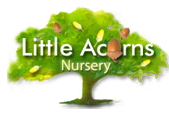
We hope that families and little ones can make the most of the free minibeasts poster and this nature-based activity. At Little Acorns Nursery in Clayton-le-Woods, we understand the huge positive impact that nature and outdoor play can have on children. That’s why we encourage them to play and explore outdoors (under supervision, of course). It’s also why we have our own Forest School, which you can learn about here.
Little Acorns is an outstanding nursery/preschool that’s located in Clayton-le-Woods, Chorley, Central Lancashire. Ofsted agrees and also rates us ‘outstanding’ and we also won a major National nursery award, beating every other nursery in the country to the top spot. Parents/caregivers can therefore rest assured that we offer the very best childcare and early years education service available.
Please use an appropriate button below to register your child for a nursery place, ask us any questions, or to book a guided tour of the setting with your child. We’d love to welcome you.
Little Acorns nursery/preschool is also conveniently near to Clayton Brook, Clayton Green, Thorpe Green, Pippin Street, Buckshaw Village, Whittle-le-Woods, Farington, Bamber Bridge, Lostock Hall, Euxton, Leyland and Penwortham.
Safety Note
It goes without saying that the child’s parent or supervising adult should be mindful of the health, well-being and safety of children, especially when they are playing outside or taking part in outdoor activities. There are many hazards outdoors, so please be vigilant. This includes, but is not limited to, avoiding stings, potentially poisonous flora and fauna, trip hazards, bodies of water (however small), changes in levels (for the avoidance of falls), choking hazards, sharp objects, stranger danger, traffic and so on. Do your own risk assessments and also teach children to learn about safety and hygiene considerations themselves.
